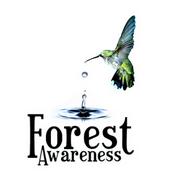Forest Awareness
We are a union of artists and professionals aiming to sensitize people for a cause that is of the outmost importance to all of us, more so than we can imagine; the preservation of the Amazon Rainforest, and its possible sustainable development.
Despite growing international concern, rainforests continue to be destroyed at a pace exceeding 150 million square meters per year! And that’s only the official numbers. The Amazon, representing more than half the planets remaining rainforests, and comprises the largest and most species-rich tropical rainforest in the world, is threatened to suffer an ecological catastrophe without precedent! Due to activities like logging, Cattle ranching, “Slash and Burn” farming and clearing for commercial agriculture (mainly the recent expansion of the Soya plantations), with its heavy machines and tons of chemicals.
The latest study found that agricultural plots averaged twice the size of clearings used for pasture and that about 90 percent of new crops were planted within a year of deforestation. Historically, land clearing for pasture has been the dominant cause of forest loss in the Amazon, but in recent years high soybean prices have fuelled agricultural expansion in the Amazon. The researchers found a strong correlation between deforestation and the average annual price of soybeans.
Interesting and stimulant is that Soya is one of the few export products to which the European Union does not apply customs barriers.
In other words, easy money for greedy Brazilian landowners and short-term foreign investors.
With this uncontrolled expansion of the plantations comes the accelerated loss of the forest. The extinguishing of the richest biodiversity on the planet! The erosion of soil, the pollution of waters, the obstruction of rivers and climatic changes compromising drastically the ecological balance of the region and indeed of the diversity of life in our beautiful, fragile blue planet; our home!
"Converting forests to cropland also has a more pronounced ecological and climate impact than any other land conversions because it involves the complete removal of land biomass, including tree trunks, stumps and woody roots"
- 74% of Brazilian meat is exported to Europe (80% of which comes from the Amazon).
- 90% of Brazilian soy goes to China and Europe where it’s processed into soy flour and soy oil; main components used by the food industry for human and animal consumption. At least half of what you find in the supermarkets containing vegetal oil; snacks, sauces, margarine, ketchups, baby food…
Think for a moment about how much devastated rainforest this implies.
Our project to support the Huni Kuin People
The indigenous population is currently the most important barrier to the Amazon deforestation. All indigenous lands substantially avoided deforestation up until our time, 500 years after the first contact with the national society.
With broad alliances of support from indigenous groups, smallholder farmers, environmentalists and governments, it is possible to create protected areas, the most important and effective tool for tropical forest conservation!
The Kaxinawá people, or Huni Kuin (true people) is a great example for organization, vitality and coexistence with the forest.
For years they have had to endure great slaughter and captivity, but they have managed to convert this sad recent past.
Today the Huni Kuin occupies 26 villages by the rivers Jordão and Tarauacá. Situated in three indigenous areas, they are living examples of how people can live happy and in harmony with what the forest has to offer. They have a proper legalized organization, ASKARJ, and a full program for the sustainable development of their communities, and of course for the preservation and protection of the forest.
The High Taraucá region, where they live, is considered a priority area to the conservation of the Amazonian biodiversity.
Most important therefore is the endeavour to buy the neighbouring land called “Seringal Iracema”, and to create a protected area with the possibility to receive people from the outside for interchanges.
This land however belongs to a politician and farmer …
The recovery of the forest may require many decades or even human generations, the devastation may require only a few years.
It is clear that the promotion of sustainable development in the Amazon is an absolute condition. However, this process needs”watchdog” participation by local population, social movements, non-government organisations and you! Let’s be aware and do our part, taking responsibility and playing a pro-active role in this process.
Please take more information in the web www.hunikuin.com
